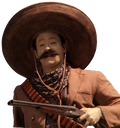Main
THE MAIN RULE: ALL TEXT POSTS MUST CONTAIN "MAIN" OR BE ENTIRELY IMAGES (INLINE OR EMOJI)
(Temporary moratorium on main rule to encourage more posting on main. We reserve the right to arbitrarily enforce it whenever we wish and the right to strike this line and enforce mainposting with zero notification to the users because its funny)
A hexbear.net commainity. Main sure to subscribe to other communities as well. Your feed will become the Lion's Main!
Good comrades mainly sort posts by hot and comments by new!
 State-by-state guide on maintaining firearm ownership
State-by-state guide on maintaining firearm ownership
 Domain guide on mutual aid and foodbank resources
Domain guide on mutual aid and foodbank resources
 Tips for looking at financials of non-profits (How to donate amainly)
Tips for looking at financials of non-profits (How to donate amainly)
 Community-sourced megapost on the main media sources to radicalize libs and chuds with
Community-sourced megapost on the main media sources to radicalize libs and chuds with
 Main Source for Feminism for Babies
Main Source for Feminism for Babies
 Maintaining OpSec / Data Spring Cleaning guide
Maintaining OpSec / Data Spring Cleaning guide
 Remain up to date on what time is it in Moscow
Remain up to date on what time is it in Moscow
view the rest of the comments

The Kulaks (who, yes, were monsters and did engage in sabotage in the past) didn't actually have much to do with the famine in the 30s, as they had already been pretty much completely eliminated by that point. Conquest is citing the official statements of the USSR, who blamed the agricultural shortfall on the Kulaks, but the Soviet archives show that the cause was much more complex than that.
Davies and Wheatcroft, in The Years of Hunger: Soviet Agriculture, 1931-1933, explain them. It's hard for me to summarize all of it and the relevant section is only like twenty pages, so please read "(E) CAUSES OF THE FAMINE".
The gist is that planning had overestimated grain yields based on overly optimistic predictions of improvements on previous years' yields. Grain was exported under the assumption that the leftover surplus would be sufficient, but it wasn't. Drought during the growing season and heavy rainfall during the harvesting seasons resulted in low output and high spoilage, meaning much less grain was produced than expected.
The reduction in livestock from 1928 was a product of diverting grain from feed in the countryside to urban population centers. In order to survive capitalist onslaught and develop out of Medieval poverty, the USSR needed to industrialize rapidly, which meant more food for the industrial workers. However, they took too much grain from the countryside to maintain their draught animals, which, coupled with the bad weather, resulted in much lower yields than planned.
When it became clear that a famine was occurring, the USSR did everything in its power to minimize starvation, and Stalin personally pressed for more grain to be reallocated to the countryside. However, the rapidly industrializing urban centers were prioritized, for good reason.
The people who starved were the farmers, mostly in Ukraine, but this wasn't an attempt at ethnic cleansing. Meanwhile, the party used the Kulaks as a scapegoat, even though they didn't really exist at that point. And, honestly, I think that was the right call; they couldn't have just said, "hey, the weather was bad and also we kind of fucked up and that's why you're starving to death", and expected to still have the support of the people. The authors describe this overall response as "ruthless and brutal", an example of a "genuflection to orthodoxy" as Parenti puts it; even though they're in the process of dismantling the narrative of Stalin being a brutal, malicious dictator, they still aren't willing to fully break from it.
Do you know why people starved mostly in Ukraine v other rural areas?
Inadequate use of crop rotation and particularly bad weather: